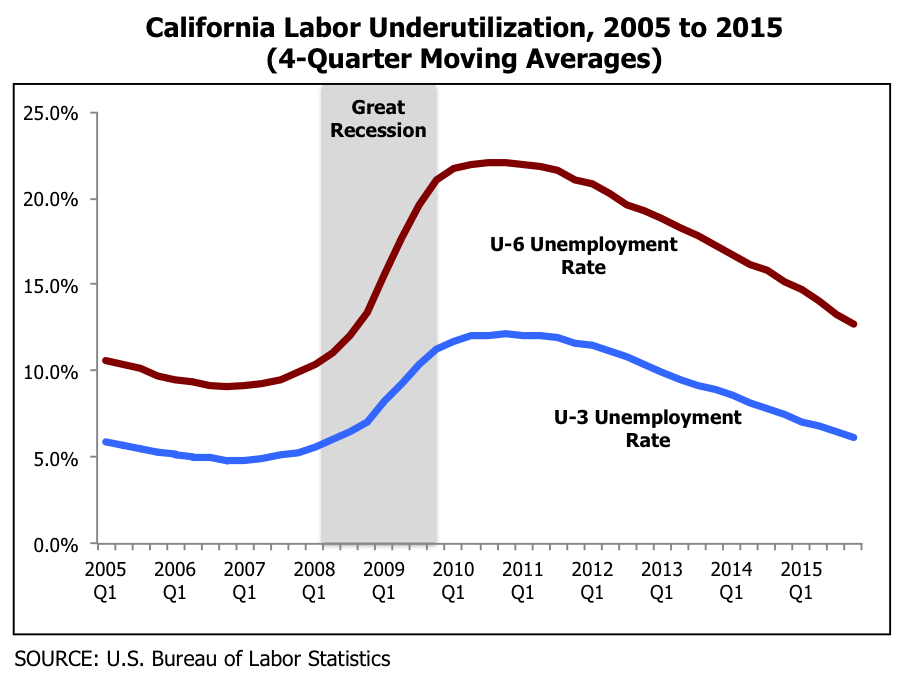Far and away the best prize that life has to offer is the chance to work hard at work worth doing. – Teddy Roosevelt
Gov. Jerry Brown and the Legislature took the politically expedient approach to solving California’s income inequality when they enacted SB 3 (the minimum wage bill) into law on April 4th. Rather than focus on the difficult but necessary tasks to help Californians improve their circumstances – reforming the education system, improving job training, and growing the economy – they simply decreed a 50 percent pay hike for low-income workers, held a press conference and declared success.
During the signing ceremony, Gov. Brown conceded that “economically, minimum wages may not make sense.” But he stated that he backed the legislation anyway because of the “morality” of supporting families and their communities.
This reasoning is unfortunate. Because if the Governor and the Legislature are truly interested in supporting families and communities, they should know that here economics and morality go hand in hand.
Here’s what I mean:
In their rush to pass this bill, the Governor and the Legislature lost sight that the ultimate goal isn’t to increase the minimum wage for its own sake but to increase family take-home pay. Take-home pay is a function of hourly pay and hours worked, so if the hours worked get significantly eroded then they haven’t really helped anyone at the end of the day.
So the real question is whether take-home pay will rise or fall.
What we know for certain is that by enacting SB 3, the Governor and the Legislature are disrupting hundreds of thousands California businesses, primarily small businesses, who find that labor costs have gone up for 5.6 million of their workers. That’s nearly 40 percent of the state’s workforce.
And organizations such as the National Federation for Independent Business (NFIB), the California Chamber of Commerce and the California Business Roundtable have all described the negative impacts to workers and businesses that will result from this legislation. These include reduced employment, higher prices, squeezed profitability and decreased competitiveness. There is conflicting evidence on the connection between unemployment and the minimum wage, however, and this was one reason why the economic warnings largely went unheeded by the Governor and the Legislature.
But under these circumstances the focus on unemployment is misplaced. It’s actually better to look at underemployment.
As traditionally measured by the U.S. Bureau of Labor Statistics (BLS), the official unemployment rate (the “U-3” rate) does not capture everyone who would be impacted by a minimum wage hike. These would include people working part time (less than 35 hours a week) who would like to work full time. These would also include discouraged workers, meaning those who are ready and willing to work but gave up looking because they believed no jobs were available. These people though are captured in one of the BLS’ alternative measures of labor underutilization (the “U-6” rate).
The figure below presents the U-3 rate and the U-6 rate for California from 2005 to 2015. As the figure shows, the average U-3 rate peaked shortly after the Great Recession at 12.2 percent and gradually declined to an average of 6.2 percent in 2015. The U-6 rate, representing underemployment, has seen more pronounced growth. It peaked at an average of 22.1 percent and declined only to an average of 12.7 percent in 2015.

The main takeaway here is that underemployment has not yet returned to pre-recession levels, so there remains a lot of slack in the labor market. Put another way, more than 6 years after the end of the Great Recession, businesses still are unable or unwilling to absorb all of the labor that is ready and willing to work.
And all of this with a minimum wage of less than $10 an hour.
Now that the minimum wage is being ratcheted up to $15 (and then indexed for inflation), why should anyone expect the slack in the labor market to improve? That makes no economic sense. At the very least, we should expect the number of part-time workers to increase or their hours to be reduced further.
So then short of repealing SB 3, what can the Governor and Legislature do in the near-term to maintain the hours worked in the state and truly increase take-home pay? Reduce and prevent regulatory burdens on California businesses to help them lower their cost of operations and hire more.
A few obvious examples come to mind:
- Scrap ongoing plans to impose sales taxes on services provided by California firms (SB 1445 Hertzberg)
- Cancel proposed mandates on retail, grocery, and restaurant establishments to provide 21-day worker schedules at least 1 week in advance (SB 878 Leyva)
- Pass reforms to limit frivolous litigation pertaining to the Americans with Disabilities Act (SB 269 Roth and SB 1142 Moorlach)
Sacramento should understand that entrepreneurs are a resourceful bunch and will adapt to whatever economic conditions they find. That means they’ll shed workers or their hours in favor of less expensive alternatives if needed. In fact, in anticipation of the upcoming minimum wage increases, they’ve probably already started planning.
Because entrepreneurs have moral obligations of their own: to keep their companies afloat so they can continue to support their families and serve their communities.
Dr. Justin L. Adams is the President and Chief Economist of Encina Advisors, LLC, a Davis-based research and analysis firm, and Vice Chair of the Leadership Council of the National Federation of Independent Business/California.

